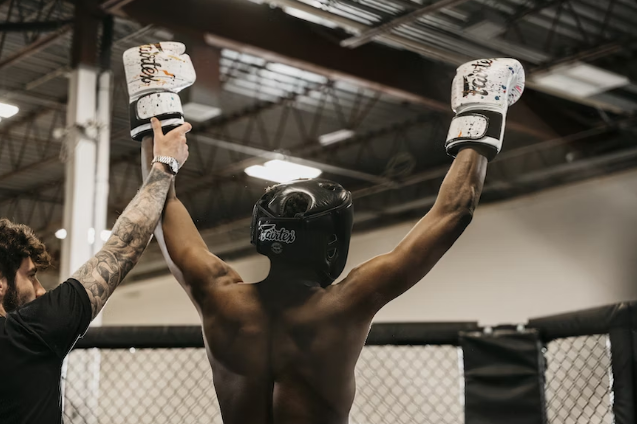The world of combat sports has been blessed with a plethora of disciplines, each with its unique flair, techniques, and histories. Two of the most popular and widely recognized of these are boxing and mixed martial arts (MMA). While both sports involve punching, strategy, and grit, they have distinct differences that set them apart. In recent years, there’s been a trend of fighters crossing over from one discipline to another. But who made the transition successfully? Let’s dive into a comparative analysis of these two martial arts and highlight the notable figures who’ve tasted success in both arenas.
While we navigate the intricacies of these combat styles, many fans enjoy tracking and analyzing fighters’ performances on platforms such as the BetWinner app, where sports enthusiasts get updates, insights, and the ability to place bets on their favorite fighters.
Boxing: The Sweet Science
Boxing, often dubbed the “Sweet Science,” is a sport with deep historical roots. It’s characterized by:
-
Striking Techniques: Boxers utilize their fists exclusively.
-
Defense: Skills like bobbing, weaving, and blocking play a crucial role.
-
Footwork: Essential for both offense and defense, it allows fighters to move in and out of range seamlessly.
MMA: A Fusion of Fighting Disciplines
MMA is a relatively newer sport but has ancient origins from various martial arts. It integrates:
-
Multiple Strikes: Fighters can use fists, elbows, knees, and legs.
-
Grappling: Submissions, takedowns, and ground control form the core.
-
Diverse Backgrounds: MMA fighters often have backgrounds in wrestling, jiu-jitsu, kickboxing, and more.
Crossing Over: Successes and Challenges
The lure of proving oneself in another discipline or the potential for lucrative paydays has driven many boxers and MMA fighters to transition. However, the crossover is far from straightforward.
Boxers to MMA
-
James Toney: A legendary boxer, but his MMA stint was short-lived. His only MMA fight was against Randy Couture, where his lack of grappling knowledge was evident, leading to a defeat.
-
Ray Mercer: The former heavyweight boxing champion had a brief MMA career. Notably, he knocked out former UFC heavyweight champion Tim Sylvia in just 9 seconds.
-
Holly Holm: A world champion in boxing, Holm moved to MMA and achieved great success. She’s best known for her head kick knockout of Ronda Rousey, winning the UFC bantamweight title.
MMA Fighters to Boxing
-
Conor McGregor: The charismatic Irishman stepped into the boxing ring against Floyd Mayweather. Despite a spirited performance, McGregor was defeated in the 10th round.
-
Anderson Silva: The MMA legend ventured into boxing after his UFC tenure, securing victories against Julio Cesar Chavez Jr. and Tito Ortiz.
-
Nick Diaz: The MMA stalwart had a few boxing matches early in his career, showcasing his striking skills.
Analysis: Why Some Succeed and Others Don’t
The journey from boxing to MMA or vice versa is riddled with challenges. Successful transitions hinge on:
-
Training: Adapting to the diverse requirements of the new discipline is paramount.
-
Physical Attributes: Some fighters have a natural advantage due to reach, power, or agility.
-
Mindset: A willingness to learn and adapt is often the differentiator.
The Financial Lure: Purses and Paydays
When fighters consider transitioning from one discipline to another, while the quest for glory and testing oneself is undoubtedly a primary motivator, there’s also the undeniable allure of financial rewards. The potential for larger purses in crossover fights has often been a significant factor in such decisions.
Boxing Purses: Historically, top-tier boxing matches have generated staggering amounts in revenue. Figures like Floyd Mayweather have earned upwards of $200 million for a single fight. Boxing’s pay-per-view model, coupled with its rich history and large fanbase, especially for significant bouts, means that successful boxers can earn substantial sums.
MMA Purses: MMA, especially under the banner of organizations like the UFC, has seen a steady growth in its popularity over the last two decades. This has translated into increasing purses for its fighters. Stars like Conor McGregor have shattered previous earnings records, with the Irishman reportedly earning over $3 million for some of his bouts, excluding Pay-Per-View shares.
Crossover Paydays: When an MMA fighter transitions to boxing or vice versa, the novelty and intrigue of such a matchup can drive significant interest, leading to larger-than-average purses. McGregor’s boxing bout against Mayweather is a prime example. The fight generated massive global interest, leading to a significant payday for both fighters.
Conclusion
Both boxing and MMA are intense combat disciplines requiring skill, determination, and heart. While some fighters seamlessly transition between the two, others find the nuances of the new sport challenging. As combat sports evolve, we’ll likely witness more crossovers and intriguing matchups. For a deeper dive into the history and technicalities of both sports, check out their comprehensive coverage on Wikipedia.
Remember, while it’s exhilarating to debate and discuss the merits of fighters and their skills in these disciplines, the journey of every athlete is unique, characterized by their dedication, hard work, and passion.
FAQ
-
What are the main differences between boxing and MMA?
-
Boxing focuses on punches, while MMA encompasses strikes, grappling, and submissions.
Have any MMA fighters become boxing world champions?
-
As of now, no MMA fighter has won a major boxing world championship.
Why did Conor McGregor fight Floyd Mayweather in boxing?
-
It was a lucrative crossover bout, drawing massive attention from fans of both sports.
Is MMA more dangerous than boxing?
-
Both sports have inherent risks. While MMA sees a broader range of injuries due to its diverse techniques, boxing often witnesses more head traumas due to continuous head strikes.






